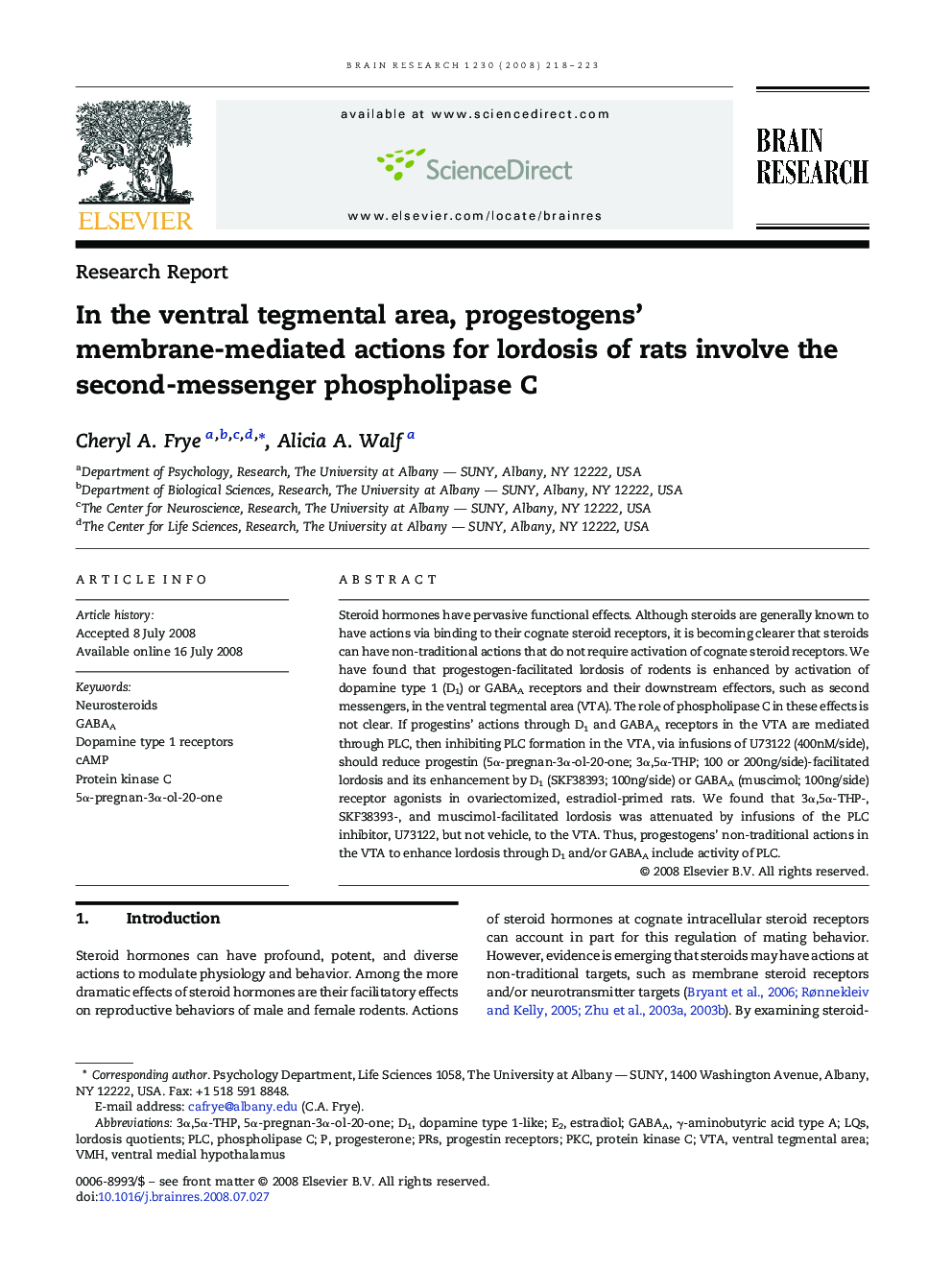| Article ID | Journal | Published Year | Pages | File Type |
|---|---|---|---|---|
| 4329177 | Brain Research | 2008 | 6 Pages |
Abstract
Steroid hormones have pervasive functional effects. Although steroids are generally known to have actions via binding to their cognate steroid receptors, it is becoming clearer that steroids can have non-traditional actions that do not require activation of cognate steroid receptors. We have found that progestogen-facilitated lordosis of rodents is enhanced by activation of dopamine type 1 (D1) or GABAA receptors and their downstream effectors, such as second messengers, in the ventral tegmental area (VTA). The role of phospholipase C in these effects is not clear. If progestins' actions through D1 and GABAA receptors in the VTA are mediated through PLC, then inhibiting PLC formation in the VTA, via infusions of U73122 (400nM/side), should reduce progestin (5α-pregnan-3α-ol-20-one; 3α,5α-THP; 100 or 200ng/side)-facilitated lordosis and its enhancement by D1 (SKF38393; 100ng/side) or GABAA (muscimol; 100ng/side) receptor agonists in ovariectomized, estradiol-primed rats. We found that 3α,5α-THP-, SKF38393-, and muscimol-facilitated lordosis was attenuated by infusions of the PLC inhibitor, U73122, but not vehicle, to the VTA. Thus, progestogens' non-traditional actions in the VTA to enhance lordosis through D1 and/or GABAA include activity of PLC.
Keywords
Related Topics
Life Sciences
Neuroscience
Neuroscience (General)
Authors
Cheryl A. Frye, Alicia A. Walf,
